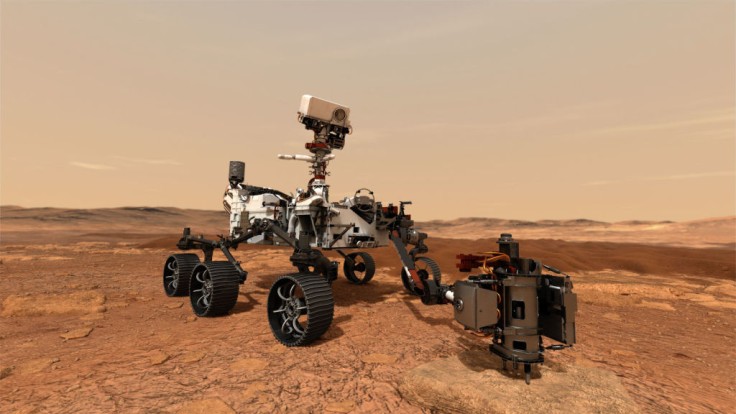
NASA made its first attempt to collect a rock sample last week but it wasn't the "hole-in-one" the Mars Perseverance Rover team hoped for. How did Perseverance perform the milestone operation and where did the sample go?
Perseverance Mars Rover's First Martian Rock Collection
NASA's Perseverance Mars rover performed its first rock sample mission in a scientifically interesting part of Jezero Crater. The area is called the "Cratered Floor Facractured Rough" and may contain Jezero's deepest and most ancient layers of exposed bedrock.
Thomas Zurbuchen, associate administrator for science at NASA Headquarters, said that we are on the "threshold of a new era of planetary science and discovery," last July 22, just before the team prepared for the Martian rock sample operation.
My first drill hole on Mars! Collecting and storing rock samples is a big and complex task, and this is a huge step. Next step: processing. #SamplingMarshttps://t.co/Ex1QDo3eC2 pic.twitter.com/JvrZcZ1NPm
— NASA's Perseverance Mars Rover (@NASAPersevere) August 6, 2021
The sampling sequence would begin with the rover placing everything needed for the process within reach of its robotic arm which measures 7 feet or 2 meters. An imagery survey is performed so that NASA's science team can determining the prime and exact location for the first sample taking as well as a separate target in the same area for "proximity science," NASA explained.
Perseverance continues with the drilling, making a finger-sized hole in the targetted rock. The entire process is autonomous, and the team back on Earth simply send "go" signals, Business Insider said.
Once the sample is collected, five instruments on the rover will perform analysis of the geological materials at the worksite to determine the mineral and chemical makeup, as well as spectroscopically measuring the resulting plume, and capturing high resolution imagery.
NASA then planned to have Perseverance recover for a sol, or one Martian day, so it can full charge its battery and continue on with the rest of its mission.
#SamplingMars is one of my most complicated tasks. Early pics and data show a successful drill hole, but no sample in the tube–something we’ve never seen in testing on Earth. Mars keeps surprising us. We’re working through this new challenge. More to come. https://t.co/XyXBssvKe6 pic.twitter.com/VTNvMA2jqN
— NASA's Perseverance Mars Rover (@NASAPersevere) August 6, 2021
Read also: NASA Captures Stunning Image of Black Hole With Huge Rings: What Is the Chandra X-Ray Observatory?
Where Did the Rock Sample Go?
When Perseverance completed drilling its first hole on August 6, NASA's team discovered that no rock was collected in the sample tube. The rover carries 43 titanium sample tubes for the rock and regolith samples to be brought back to Earth.
The Perseverance mission assembled a response team to analyze the data. The first step the team took was to capture close-up images of the borehole to have a better understanding of what had happened. Findings from that investigation have yet to be released.
Jennifer Trosper, project manager for Perseverance at JPL assumes that the rock target may not have reacted the way the team expected during the coring process, making it more of a space problem than a hardware issue on the rover's end.
This isn't the first time Rovers and scientists have encountered surprising rock and regolith characteristics during their missions. The Phoenix mission collected soil that was "sticky," back in 2008. Curiosity was able to drill into rocks that turned out to be harder and more brittle than what was expected. The InSight lander's heat probe was unable to penetrate the Martian surface as planned, NASA said.
According to Business Insider, the mission will be running for another decade and another mission will head to the Red Planet to collect the samples and bring them back to Earth. These samples will further the study and investigation of Martian life or lack thereof.









